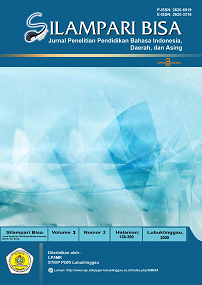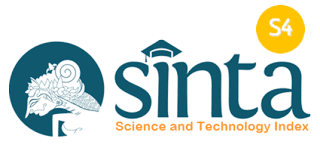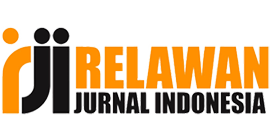Reading Strategy on Internet for Enhancing Reading Profiency
Abstract
This study aim describes an overview of the research related to second language learners and reading strategies. It also considers the more recent research focusing on strategies of reading English texts on internet. The following questions are addressed: (1) what is strategy of reading English text? (2) What is the kind of reading strategy that appropriate for English text on Internet? (3) How is the strategy of reading English text applied on Internet for enhancing reading proficiency? The research method uses qualitative methods. It aims to find out the appropriate strategy in order to enhance reading proficiency. In collecting the data, the writer uses library research. The data analysis process has been carried out by reading the data, reducing, classifying, analyzing, and interpreting. Based on the results of the analysis, there are six strategies for reading proficiency on the internet to improve reading skills, namely predicting, previewing, scanning, skimming, reading for details, and speed reading. From the final result, the writers know the appropriate strategy of reading English text on internet is speed reading.
References
Block, C. & Israel, S. (2005). Reading first and beyond: The complete guide for teachers and literacy coaches. Thousand Oaks, CA: Corwin Press.
Bogdan, R. C., & Biklen, S. K. (1982). Qualitative research for education: An introduction to theory and methods. Boston: Allyn and Bacon.
Broom & Dozier. (1989). Using research in public relations. New Jersey: Prentice Hall.
Buzan, T. & Buzan, B. (1994). The mind map book: How to use radiant thinking to maximize your brain's untapped potential. New York: Dutton.
Cornor, C. M. (2004). Effective reading comprehension intruction examining child x intruction. Journal of Educational Psychology, 95(4), 682-693.
Dole, J.A., Duffy, G.G., Roehler, L.R. & Pearson, P.D. (1991). Moving from the old to the new: Research on reading comprehension instruction. Review of Educational Research, 61(2), https://doi.org/10.3102/00346543061002239
Fry, E.B. (1963). Teaching faster reading. London: Cambridge University Press.
Hermanudin, Suhartono, Suryadi, & Noermanzah. (2019). Improvement of reading comprehension ability by using core models of class vii a students of SMP Negeri 10 Bengkulu Tengah. International Journal of Scientific and Technology Research, 8(12). 647-648, http://www.ijstr.org/paper-references.php?ref=IJSTR-1219-25902
Kang, H. (2014). Understanding online reading through the eyes of first and second language readers: An exploratory study. Computers & Education, 73(1), 1–8. https://doi.org/10.1016/J.COMPEDU.2013.12.005
Klein, M. L., Peterson, S., & Simington, L. (1991). Teaching reading in the elementary grades. Needham Heights, Mass: Allyn and Bacon.
Küçükoğlu, H. (2013). Improving reading skills through effective reading strategies. Procedia-Social and Behavioral Sciences. 70. 709–714. http://doi.org/10.1016/j.sbspro.2013.01.113
Ministry of Education and Culture Republic of Indonesia. (2009). Directorate general of quality improvement of teachers and education personal teaching reading. Jakarta: Ministry of Education and Culture Republic of Indonesia.
Moleong, L.J. (2013) Metode penelitian kualitatif. Bandung: PT. Remaja Rosdakarya.
Nunan, D. (1991). Language teaching methodology: A textbook for teacher. Upper Saddle River, NJ: Prentice Hall.
Oczkus L.D. (2003). Reciprocal teaching at work strategies for improving reading comprehension. Newark, DE: International Reading Association.
Sari, M.H., Susetyo, Noermanzah, Wardhana, D.E.C., Kusumaningsih, D. (2020). Understanding the level of students' reading comprehension ability. Universal Journal of Educational Research, 8(5). 848-1855, https://doi.org/10.13189/ujer.2020.080521
Wooley, G. (2011). Reading comprehension assisting children with learning difficulties. London & New York: Springer.












